Construction Started : 1644
Construction Completed : 1656
Cost of Construction : 1 million rupees
Who Built It : Mughal Emperor Shah Jahan
Maintained By : Delhi Waqf Board
Where is it Located : Delhi, India
Structure Type : Mosque
Dimensions : 80m in length; 27m in width; 41m in its highest point
Materials Used : Red Sandstone, Marble
Architectural Style : Islamic
Architect : Ustad Khalil
Capacity : 25,000
Visit Timing : 7am to 12pm, 1:30pm to 6:30pm, all days of the week
Entry Fee : Free entry, Rs. 200-300 photography charge, Rs. 100 from climbing the southern minaret
How to Reach : Walking distance from Old Delhi Railway station and ISBT Kashmere Gate. Chawri Bazaar is the nearest Metro Station - 500m away. AC and non-AC buses connect Jama Masjid to the entire Old and New Delhi. Autos and taxis can also be availed to reach here.
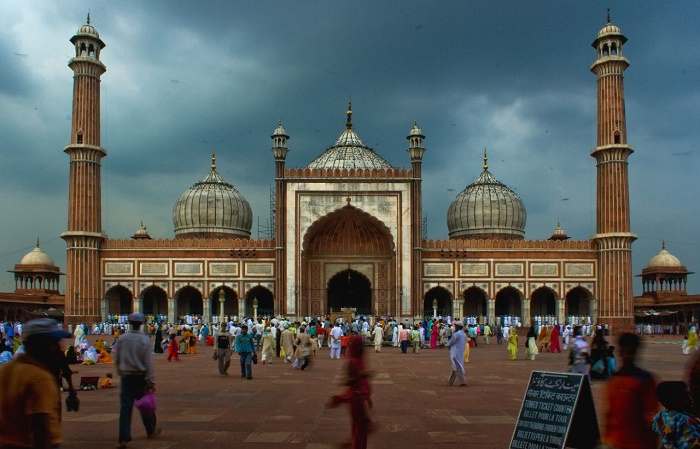
Towering over Old Delhi, the magnificent façade of Jama Masjid stands as the reminder of Mughal architecture. Commissioned by the Mughal Emperor Shah Jahan, the Masjid-i Jah?n-Num? (meaning Mosque commanding view of the world) was his final architectural opus. On the other hand, the popular name, Jama Masjid is derived from the word 'Jummah', referring to the congregational prayer observed by Muslims on Fridays. Built from red sandstone and white marble, the edifice dominates the skyline of the busy Chawri Bazar in central Delhi and is considered the largest mosque in India. Each year, on Eid, thousands of reverent Muslims throng the mosque to offer special Eid Namaz in the morning. The mosque is jointly maintained by the Delhi Wakf Board and the Jama Masjid committee under the directives from the Shahi Imam.
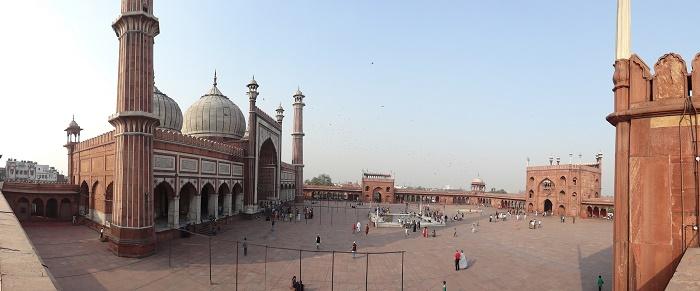
Image Credit: thousandwonders.net
History of Jama Masjid
Following the death of his wife, Mughal emperor Shah Jahan decided to shift his capital from Agra to Delhi and founded the walled city of Shahajahanabad. It remained the capital of the Mughals succeeding him and evolved to what we now know as Old Delhi. The Jama Masjid was commissioned to be the central mosque of the new city. Built by more than 5000 artisans under the supervision of Wazir Saadullah Khan, the mosque designed by architect Ustad Khalil, took 6 years to be completed. The mosque was inaugurated by Sayed Abdul Ghafoor Shah BukhariI, a mullah from Bukhara (now Uzbekistan), on 23 July 1656, on the invitation from Shah Jahan, whom he bequeathed the title Shahi Imam and appointed to the high office of Imamat-e-Uzma. The cost to build the mosque came to a whopping 1 million rupees at the time.The mosque houses several relics of Islamic religious significance like an age old transcript of the Quran printed on deer skin, the footmarks, sandals, and a red beard-hair of the Holy Prophet Mohammad.
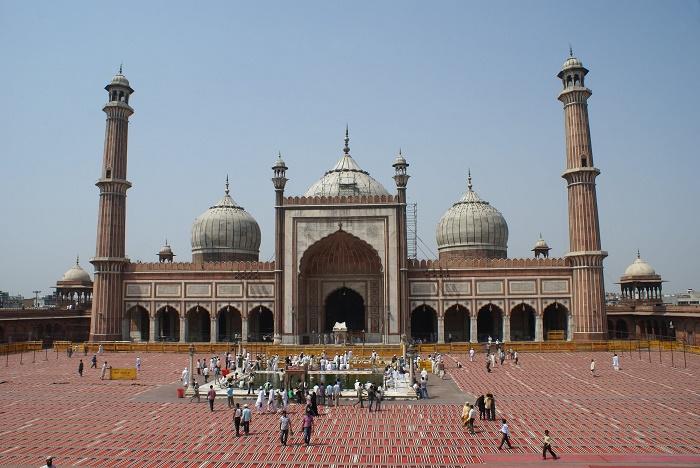
Image Credit: YouTube
Design & Architecture
The austere grandeur of this structure is sure to impress at the first glimpse. The mosque is built on an expansive elevated stone platform that is accessible through flights of stairs from three sides, east (35 steps), north (39 steps) and south (33 steps). The eastern gate is the largest and served as the Royal entrance, remains closed on weekdays. The mosque faces west towards the Holy city of Mecca. Three sides of the mosque are covered by open arched colonnades, featuring a lofty tower-like archway in the center. The roof of the mosque is capped with three marble domes with alternating striping in black and white marble.
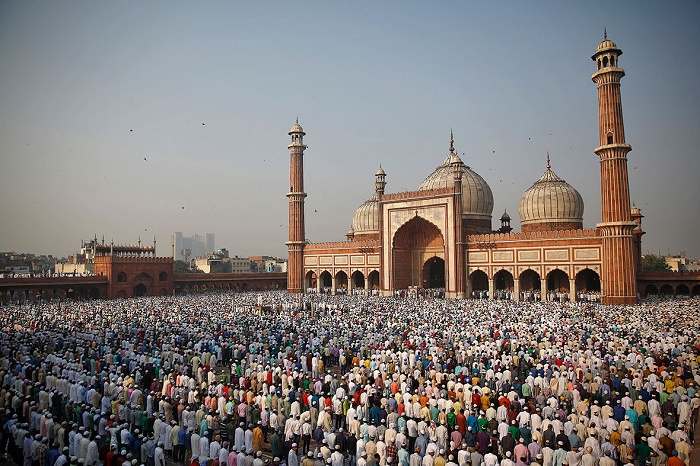
Image Credit: ibtimes.co.uk
The domes are in turn capped with gold adornments. Two lofty minarets, standing 40 m high, decorated in longitudinal stripes of white marble and red sandstone, flank the domes on either side. Each minaret has 130 steps inside and only the southern one is open to public for a fee. The top offers stunning panoramic view of Delhi with the Connaught Place and Sansad Bhavan (the Parliament House) in a direct line with the Jama Masjid, a feature incorporated by architect Edwin Lutyens into his design of New Delhi. An open twelve sided domed pavilion is hosted by the three projecting galleries separating the minarets.
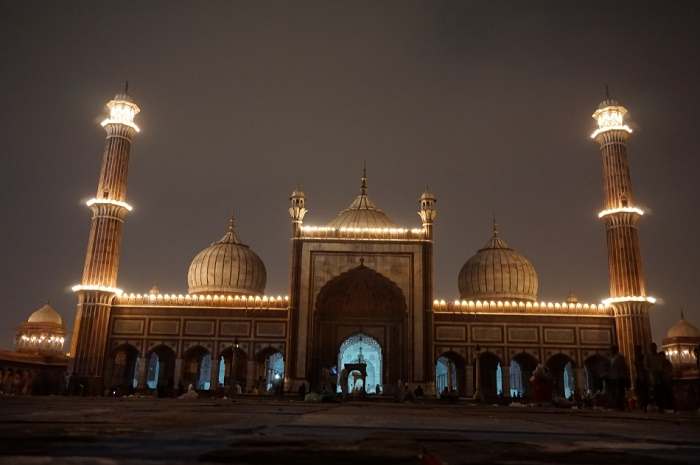
Image Credit: alphacommunity.sony.co.in
The mosque measures 80 m in length and 27 m in breadth and houses the main prayer hall with seven arched entrances facing the west (facing Mecca) with the traditional mihrab (altar) for the prayer leader.The walls of the mosque are covered with marbles up to waist-level height. Over these arched entrances there are tablets of white marble, 1.2 m by 0.76 m, inlaid with inscriptions in black marble detailing the history of the mosque along with praising the reign and virtues of Shah Jahan. The slab over the central arch is inscribed with two simple words "The Guide!"A huge hall featuring 260 columns is located on the western side of the mosque and is adorned with sculptures in the Jain and Hindu architectural pattern.Ornamentations with floral motifs or calligraphic inscriptions adorn the arches, walls, under arches and under domes, columns, and floor of the mosque.
The courtyard in front of the mosque occupies 408 square feet and can accommodate 25,000 individuals during prayer. The hauz, in the center of the courtyard, is an ablution tank for washing hands, face and feet before entering the main building for prayer.It symbolizes the ritual of baptism needed to enter the community of believers. One of the best examples of Mughal architecture, this 350 years old shrine is in dire need of repair and conservation efforts. A plea has been raised to take it under Archeological survey of India (ASI) from the Delhi Wakf Board, for better upkeep of this architectural marvel.



